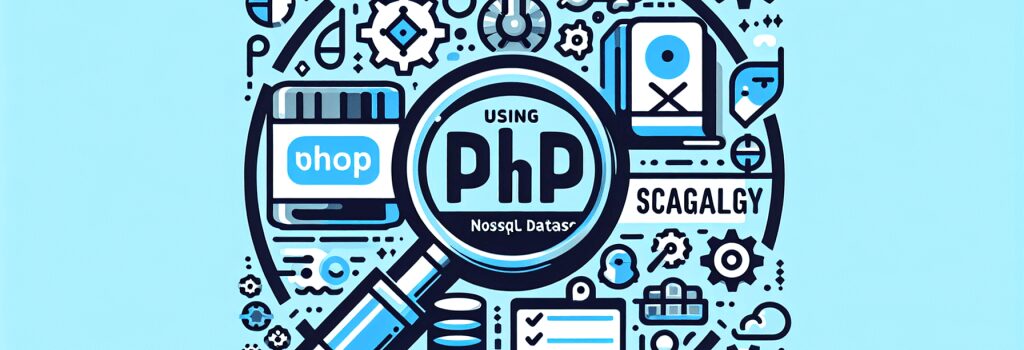Using PHP with NoSQL Databases for Scalability

Open your laptops, grab a cup of coffee and get your coding fingers ready, because we’re about to dive into the wonderful world of PHP and NoSQL databases. If you’re as excited as a kid in a candy store, you are on the right path, and if you’re not… well, get ready to be!
For our friends who might be puzzled by the mere sight of the terms PHP and NoSQL databases, let me give you a quick catch-up. PHP, (no, it doesn’t stand for Puppies Help Pandas, although how cool would that be!) is a popular scripting language designed for web development, while NoSQL databases are databases that store information differently than traditional SQL databases. Right, now that everyone’s on the same page, let’s start the fun!
Content:
When PHP met NoSQL: A Tale as Old as Time
Before we go any further, let’s quickly know why PHP with NoSQL databases is the talk of ‘Coding Town’. NoSQL databases are inherently more scalable due to their distributed nature. This means that they can handle large amounts of data with ease, while PHP can communicate with these databases smoothly, making it a match made in heaven or in the cloud, if you prefer that lingo.
Choosing the Right NoSQL Database for Your PHP Project
No two NoSQL databases are the same and like eggs, they come in different shapes and sizes. You’ve got your document databases like MongoDB, your key-value databases like Redis, and your wide-column stores like Cassandra. Don’t worry, those aren’t secret codes or video game characters. They are just examples of NoSQL databases. Your chosen hero (database) depends on the kind of project you’re working on, so choose wisely!
Using PHP with NoSQL Databases: The Art of Scaling
Alright folks, now onto the main course, using PHP with NoSQL databases for scalability. Using PHP with a NoSQL database is like learning to dance; you need the right steps. The first step? Connect PHP to your chosen NoSQL database. The second step? Interact with the database using PHP.
Connect PHP to a NoSQL Database
To connect PHP with a NoSQL database, all we need is a driver. Yes, like a golf driver, but for code. This driver, or extension, facilitates the communication between PHP and your NoSQL database. You install it, configure it and voila – PHP and your NoSQL are now talking in a language only they understand.
Interact with the NoSQL Database using PHP
After you’ve successfully initiated the conversation, it’s time to dive into the interaction part. When using PHP with a NoSQL database, PHP will mainly be responsible for CRUD operations – don’t worry, we didn’t accidentally hit the caps-lock. CRUD stands for Create, Read, Update and Delete – the four basic operations you can perform on information on a website.
PHP with NoSQL Databases: Creating a Symphony of Scalability
Marrying the scalability of NoSQL with the ease and familiarity of PHP, you are basically creating a symphony of agility and growth. Scalability is not a scary word any longer, but it’s now an achievable goal!
And there you have it, folks, a beginner’s guide to using PHP with NoSQL databases for scalability. Remember, this is just the tip of the iceberg. The real fun begins when you actually start coding. So, what are you waiting for? Let the scaling magic begin!
P.S. Just in case you’re wondering, we still think Puppies Helping Pandas would be an amazing thing. Don’t lose that sense of humor as you navigate through this fascinating world of codes and data. Happy coding!


